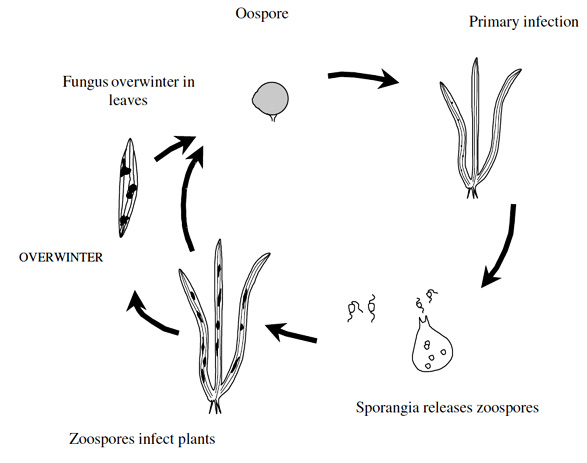Identification of pathogen:
- Infected plant reveals the systemic mycelium of the fungus Sclerophthora macrospora within the crowns, stems, and leaves.
- A few axillary buds may escape the colonizing hyphae emanating from the crown tissue and may produce an occasional healthy tiller free of mycelium. Mycelium has not been observed to progress far in roots.
- Mycelium is coenocytic, multinucleate, intercellular. Narrow "extension" hyphae, closely associated with vascular bundles, carry the fungus up the leaf sheaths.
- Localized branching and proliferation of these hyphae into tissue between the bundles occurs, increasingly so in the upper sheath.
- Massive development of multi-diameter mycelium occurs in the lamina, again associated initially with the bundles.
- sporangiophores which protrude through the stomata and produce six or more lemon-shaped, apically poroid sporangia.
- Sporangia mature rapidly, each releasing 50 or more motile zoospores.
- Zoospores are ovoid to pyriform in shape.
Management:
- Affected plants should be destroyed by burning.
- Keep the field clean.
- In case of severe attack spray Mancozeb on the standing crop at the rate of 2 g/litre of water.
|
| Life cycle of Sclerophthora Macrospora |
 |
|

